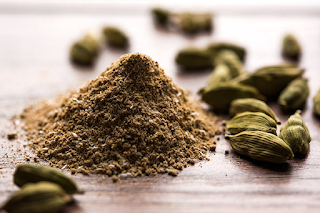How to store vegetables and fruits in the fridge and keep the fresh for a long time, Here you are 5 tips to store them:
1- Avoid pre-washing:
If you want to store veggies or fruits in the refrigerator, wash them before using. The reason is that the added moisture from the washing process can cause the product to rot faster. If you must wash vegetables or fruits first, let them dry thoroughly before putting them in the refrigerator.
2- Maintain steady
humidity in your refrigerator:
To ensure your fruits and vegetables
stay fresh for a long time, it is essential that they are kept at a constant
humidity level that is not too high. Some refrigerators have features that help
you maintain such levels. In Electrolux refrigerators, look for the
TasteLockAuto function, with a membrane that automatically releases excess
moisture to reduce condensation and prevent your products from spoiling
prematurely.
3-Store whole vegetables
and fruits:
Don’t
cut produce before putting it in the fridge, since cut-up vegetables and fruits
will rot more quickly. Only remove roots and stems, but keep the remainder of
the cutting for when you’re cooking.
Put leafy vegetables and herbs into the crisper and separate other fruits and vegetables on different shelves. Especially leafy vegetables and herbs need to store them in a glass of water, and the best way to store them is to loosely wrap them in a damp paper towel and keep them in a tightly sealed container or reusable bag in the fridge to prevent oxygen from entering and leaves from wilting.
5-Set the correct temperature in your refrigerator:
To keep fruits and vegetables fresh as
long as possible, it is essential to set the right temperature in the
refrigerator. It is best to store vegetables and fruits at a temperature of 1
to 4 degrees Celsius.
How long can you store fruits and vegetables in your fridge?
Sliced fruit will keep for about 5 days after you’ve put it in the refrigerator. Note that some fruit like apples may see a slight change in color, but they’re still edible. However, for most fruit and vegetables, we recommend that you don’t slice them ahead of time, since their skin provides natural protection against spoiling, keeping them fresh for weeks. While different batches and qualities of fruits and vegetables can sometimes keep for longer or shorter.
Apples | 3-4 weeks |
Apricots (ripe) | 4-5 days |
Avocado (ripe) | 3-5 days |
Blueberries | 1-2 weeks |
Cherries | 4-7 days |
Cranberries | 3-4 weeks |
Gooseberries | 2-3 days |
Grapefruit | 2-3 weeks |
Grapes | 5-7 days |
Guava (ripe) | 3-4 days |
Kiwi (ripe) | 5-7 days |
Mango (ripe) | 5-7 days |
Melons (ripe) | 7-10 days |
Nectarine (ripe) | 3-5 days |
2-3 weeks | |
Peaches (ripe) | 3-5 days |
Pear (ripe) | 5-7 days |
Pineapple | 3-5 days |
Plums (ripe) | 3-5 days |
Pomegranate | 1-2 months |
Prickly pear (ripe) | 1-3 days |
Raspberries | 2-3 days |
Rhubarb | 5-7 days |
Strawberries | 3-5 days |
Watermelon | 2 weeks |
Vegetables | Storage times in fridge |
Green beans | up to 5 days |
Broccoli | up to 5 days |
Cabbage | 1 week |
Carrots | up to 4 weeks |
Cauliflower | 1 week |
Celery | up to 2 weeks |
Corn | up to 2 days |
Cucumbers | 1 week |
Green onions | up to 10 days |
Lettuce | 1 week |
Mushrooms | up to 7 days |
Bell peppers | up to 2 weeks |
Spinach | up to 5 day |


.JPG)
.JPG)
.JPG)
.JPG)

.JPG)
















.jpg)

.jpg)
.jpg)
.jpg)
.jpg)



.jpg)




